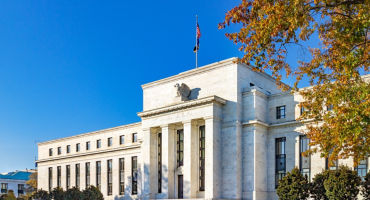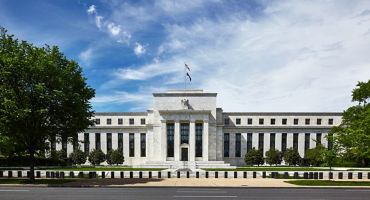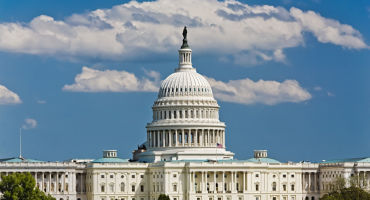In my last piece, I reviewed the US Federal Reserve’s (Fed’s) lessons learned from its policy response during the COVID-19 pandemic. There, I noted that the central bank now believes that the neutral rate for the US economy is not much higher than it was before the crisis, and that current policy rates are restrictive as a result. So, in the Fed’s eyes, today’s high rates are the main reason why inflation has eased. While I agree that current monetary policy is restrictive and has contributed to the easing of inflation, I believe the primary reason is different than what the Fed supposes. I think Mr. Friedman and long-maligned monetarist theory may hold the answers.
Three contemporary theories for why inflation has dipped
Heavy stimulus, supply-side economics, and interest-rate policy: these are three competing arguments holding sway among economists today. Let’s break each of them down.
First, the most prevalent theory for why US inflation rose so dramatically after the pandemic was because of the excess stimulus put in place by both fiscal and monetary authorities; the idea being that the winding down of that stimulus has caused the drop in inflation. While this argument explains the high prices of 2021/2022, it is hard to reconcile the fact that, in 2023, fiscal policy was still very expansionary and the deficit reached almost US$1.8 trillion, yet inflation fell dramatically. To be clear, while fiscal and monetary policy have contributed to inflation, particularly shelter- and auto-related inflation, the correlation between fiscal policy and core inflation has been tenuous. In fact, several G10 countries issued less robust fiscal responses than the US, yet inflation has risen and fallen uniformly among all ten.
Second, the supply-side argument would ascribe the rise and fall in prices to the repairing of global supply chains and increased US immigration, which relieved labor-market pressure. No doubt these are significant reasons why inflation, particularly for goods, has slowed; but core services inflation has remained sticky. In addition, inflation has declined even in countries without substantial net increases in immigration. Most important is that, even adjusting for immigration, US unemployment is well below any reasonable estimate for the non-accelerating inflation rate of unemployment (NAIRU), or the rate at which inflation is at target.
Third, as I mentioned above, the Fed would argue that its interest-rate policy is the reason prices have come down, having slowed demand in rate-sensitive parts of the economy, such as housing and non-residential investment. The economic logic here is that when real policy rates are high, investment spending slows, the labor market weakens, and inflation falls due to lower aggregate demand. Fed Chair Jerome Powell has said that the interest-rate sensitive parts of the economy are weaker, and he is correct. However, government spending and consumption have prevented a slowdown in aggregate demand, which actually accelerated last year. Finally, employment in these segments, particularly construction, is still robust, yet inflation has fallen from its peak.
Monetarist interpretation of inflation
This brings us back to Milton Friedman and the monetarists. While it is likely that inflation has declined because of a combination of all three theories, I believe that, despite its decades-long unpopularity, monetarism is worth another look, as it best explains the decline in inflation amidst an economy growing above trend. The key forgotten element of Friedman’s oft-derided quote about inflation is that it “...can only be produced by a more rapid increase in the quantity of money than in output.” The Fed’s quantitative easing during the pandemic was inflationary because it was combined with fiscal stimulus and a well-capitalized banking system. The Fed essentially bought securities from the household sector who then deposited the cash at banks, thus increasing banks’ liabilities and leading to substantial money-supply growth in excess of nominal GDP.
The Fed’s M2 money-supply measure relative to nominal GDP peaked in mid-2021, inflation followed a year later, and has declined ever since. Tip of the hat to Mr. Friedman. Admittedly, the causality between money and inflation is a lot less clear than other economic relationships, but it is the best heuristic we have for explaining how inflation continues to decline while the US economy is growing above potential, and while the unemployment rate remains well below NAIRU.
The monetarist perspective would give the Fed credit for the decline in inflation, even if it were not via the channel the bank supposes. The Fed’s rapid rate hikes have inverted the US yield curve, disincentivizing both borrowing (at high short-term rates) and bank lending (the highest-impact form of money). This barbell effect has slowed both money-supply growth and the velocity of money relative to what it would have been had the Fed not substantially raised its policy rate.
Inflation and bond yields from here
If the Fed’s interest-rate policy has been a key reason for inflation’s decline, then what should we make of its recent “higher-for-longer” rhetoric? Ironically, recent high inflation prints should give us more confidence that prices will continue to decline, and bonds will do a better job of hedging the economic cycle than they have over the past few years. The last three prints have been so high, in fact, that the Fed will need at least a few quarters of data to ensure that inflation is returning to target. In the near term, the Fed is unlikely to reduce interest rates, which means the yield curve may stay inverted for some time. This should subdue bank lending and raise the opportunity cost of spending, particularly with cash yields north of 5%; both factors should support further declines in inflation.
Even if growth decelerates and the unemployment rate rises, the Fed will be reluctant to cut rates immediately. Many investors have been awaiting a rate cut as the signal to buy bonds and get out of cash; however, longer-duration bonds tend to do best when the central bank should ease policy rates but chooses not to. This is the situation we might find ourselves in over the next few months.






















